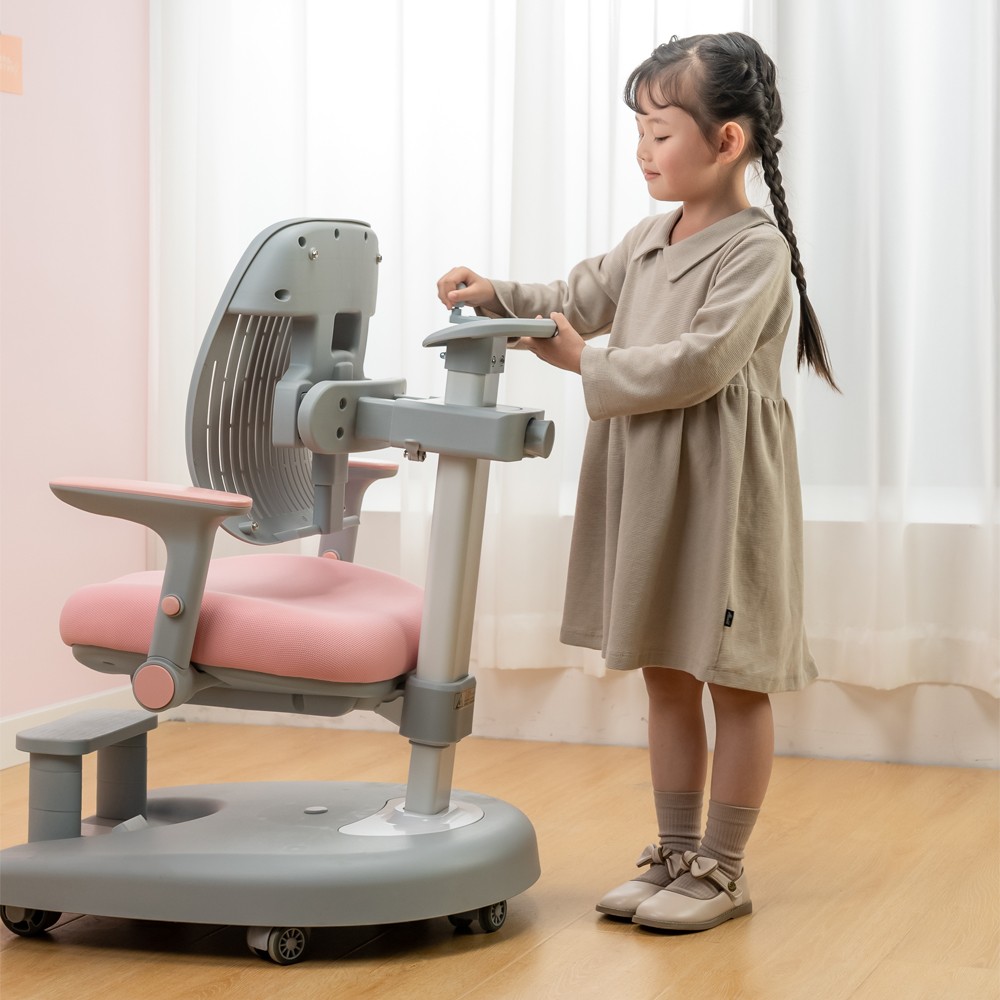I. Market Status: Rapid Growth and Structural Differentiation
Sustained Expansion of Market Scale
The Chinese market for children's ergonomic chairs has shown significant growth. The market size is expected to reach 1.5 billion yuan in 2025 and exceed 2.5 billion yuan by 2030, with an average annual compound growth rate of about 8.7%. The penetration rate has exceeded 40% in first-tier cities and approached 30% in new first-tier cities, demonstrating strong consumption potential. Globally, the market size reached billions of yuan in 2023 and is projected to grow further by 2029, with export volumes from Chinese brands to regions like Southeast Asia and the Middle East increasing by 62.3% year-on-year.
Product Iteration Driven by Consumption Upgrading
Parents' emphasis on children's health has propelled the market transition from "functionality" to "health-oriented and intelligent." The proportion of intelligent adjustable products increased from 15% in 2025 to 35% in 2030, with products featuring sitting posture correction and remote monitoring functions becoming mainstream. For example, Boshi Youcheng's "Zhixue Cabin" study desk is equipped with an AI large model that generates personalized sitting posture health reports.
Competition Landscape: Concentration of Leading Brands and Rise of Domestic Products
The domestic market shows a centralized trend with CR5 reaching 39.7%, and brands like Hutong, Heibaitiao, and Xihou occupy 60% of the high-end market share. International brands such as Herman Miller and Steelcase still hold part of the high-end market through technological advantages, but domestic products have rapidly replaced them with cost-effectiveness and localized design, causing import brands' market share to shrink by 38% year-on-year in 2024. Online channels have become the main battlefield, accounting for over 65% of sales on platforms like JD.com and Taobao, with live-stream e-commerce accounting for 37%.
Policy Regulation and Quality Upgrading
The newly revised General Technical Conditions for Children's Furniture in 2024 mandatorily requires anti-pinch devices for adjustable components and increases the formaldehyde emission standard by 40%, driving industry reshuffling. Local policies in Zhejiang, Jiangsu, and other regions have included compliant study desks and chairs in the compulsory education subsidy list, further stimulating demand.
II. Development Trends: Technology-Driven and Scenario Deepening
Integration of Intelligence and IoT
Dynamic Monitoring and Feedback: Products equipped with pressure sensors and UWB centimeter-level positioning technology can real-time monitor spinal curvature and generate health reports. For instance, Xihou's intelligent chair achieves sitting posture optimization through automatic collection of 72 parameters.
Ecological Linkage: Products can be connected to the "Smart Campus" system, forming a closed loop with intelligent desks and eye-protecting lamps to provide full-scene health solutions.
Environmentally Friendly Materials and Sustainable Design
Safety and Non-Toxicity: The usage rate of antibacterial bamboo fiber composite materials increases by 17% annually, with F4 star panels (formaldehyde emission ≤0.3mg/L) and antibacterial PU materials (antibacterial rate 99%) becoming the mainstream choice.
Circular Economy: Leading enterprises have established raw material traceability systems, achieving full-link monitoring from steel batches to product QR codes, reducing defect rates to 0.3%, meeting automotive parts standards.
Segmented Scenarios and Personalized Adaptation
Age Segmentation: Products are designed for age groups such as 3-6 years and 7-12 years. For example, Aurora's children's chair offers 24 ergonomic combinations to suit different body types.
Functional Expansion: Scene-based products emerge, such as writing boards that can switch to painting mode and low-profile designs with reading corners (seat height 25-30cm), meeting diverse needs for learning, handicrafts, reading, etc.
Globalization and Localization Balance
Export Growth: In March 2025, China's ergonomic chair export volume reached 4.16 billion yuan, a year-on-year increase of 15.67%, mainly sold to the U.S., Japan, Southeast Asia, and other regions.
Local Innovation: Enterprises strengthen professional endorsement through the "offline experience store + medical channel" model (e.g., Hutong's cooperation with scoliosis screening institutions) while expanding overseas markets through cross-border e-commerce.
Standard System and Industry Norms
Leading Group Standards: The Children's Study Chair group standard released in 2023 clearly defines 6 labels covering children aged 3-14, putting forward quantitative requirements for body pressure distribution and durability testing.
Upgraded Quality Certification: The EU GPSR regulations have included children's tables and chairs in the mandatory certification scope, prompting enterprises to enhance technical compliance capabilities. Export products need to pass barriers such as REACH certification.
III. Challenges and Countermeasures
Price Sensitivity and Quality Balance
Households with middle-to-low incomes have strong demand for products under 400 yuan, accounting for 65% of the market share. Enterprises need to reduce costs through large-scale procurement (e.g., leading enterprises maintain a gross profit margin of 35%-42%) and supply chain optimization, while meeting differentiated needs through a combination of "basic models + intelligent modules."
Technological Innovation and User Education
Consumers face difficulties in distinguishing "pseudo-ergonomic" products, with return rates as high as 18%-22%. Enterprises need to strengthen technical popularization, such as displaying core designs like dual-back partitioning and sacral support through offline experience stores to enhance user awareness.
International Competition and Compliance Pressure
Export markets face challenges of a 23%-25% increase in testing costs due to new EU regulations. Enterprises need to lay out technological R&D in advance, such as adopting anti-tip structures and environmentally friendly materials compliant with GPSR regulations.
IV. Future Outlook
The children's ergonomic chair market will feature "technology-driven, scenario-segmented, and standard-unified" development. It is expected that by 2030, intelligent products will contribute over 65%, environmentally friendly materials will be applied in more than 70%, and online channels will account for over 70%. Enterprises need to focus on three core points: dynamic adaptation to growth (e.g., Boshi Youcheng's tracking of over 5 million posture data), health dataization (e.g., sitting posture health reports), and full-link safety (closed-loop protection from materials to usage scenarios) to gain an edge in fierce competition.


